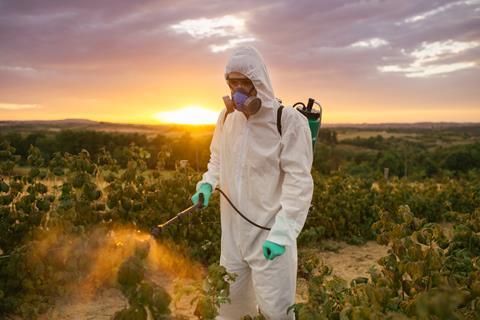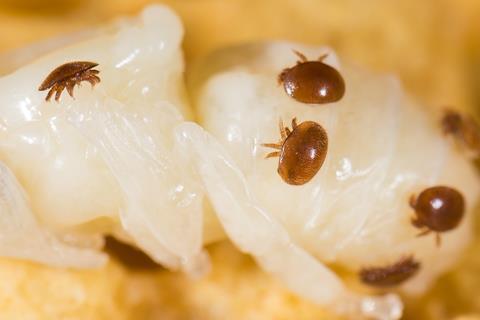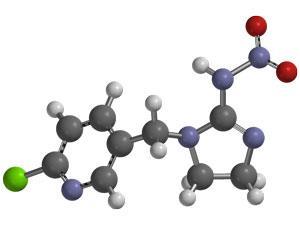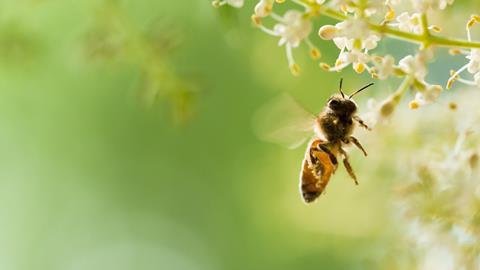Meera Senthilingam
This week, a controversial compound that’s buzzing away our bees. Explaining more is Phillip Broadwith.
Phillip Broadwith
Pesticides are an integral part of modern agriculture. Using chemical means of protecting crops from weed competition, fungal infection and insect pests, combined with plant breeding efforts and synthetic fertilisers from the Haber-Bosch process, led to the ‘green revolution’ of the mid-20th century. Yields increased significantly, supporting growing populations with the same amount of land, and saving millions from starvation.

But pesticides are also controversial. By their nature, they are toxic to their target organisms, be that plant, fungus or insect. But they also need to be selective for that target.Ideally, they should cause minimal harm to the crop that they are protecting and any other organisms they happen to come in contact with. All sorts of field-living animals like mice, voles, frogs and earthworms can be at risk. But arguably, the most controversial – and difficult – animals to protect are bees.
Honeybees, bumblebees and various kinds of solitary wild bees are important pollinators for crops, especially fruit, nuts and vegetables. As a rough estimate, about a third of all the food we eat comes from bee-pollinated crops. And the bees are dying.
In recent years, beekeepers and entomologists have become increasingly worried about colony collapse disorder. Hives of bees suddenly and mysteriously die out. Various factors are suspected to contribute to colony collapse:
A parasitic mite called varroa attacks bees, and also infects them with a variety of viruses.

Bees placed in extensive areas of the same crop aren’t getting the varied diet that they need to stay healthy. And removing their honey and feeding them sugar-based supplements could be depriving them of micronutrients, leading to malnutrition.
Selective breeding of commercial honeybees has decreased genetic diversity, possibly making bees more susceptible to disease. And the US practice of moving hives over great distances, to pollinate different crops in different seasons, may help to spread diseases more quickly.
Alongside all this, the finger of blame is pointed at insecticides. In the last few years, attention has focused on one particular class of insecticides – the neonicotinoids.
Neonicotinoids, as the name suggests, are based on nicotine. The nicotine in plants like tobacco, and other Nicotiana species, is a natural deterrent to caterpillars and other insects that might try to eat the plant. It works by binding to receptors in nerve cells that usually respond to the neurotransmitter acetylcholine. This disrupts signals in the nervous system, causing paralysis and death.
But nicotine itself is not very selective – it is toxic to mammals and other animals as well as insects. Agrichemical companies have therefore made modified versions of nicotine that selectively affect insects and are less toxic to mammals. The first of these neonicotinoid insecticides was imidacloprid, developed by Bayer CropScience in the early 1990s.
Several variants followed, as other companies developed their own products and tried to improve the selectivity even further. But imidacloprid quickly became the most widely-used insecticide in the world.
Imidacloprid is highly toxic to bees, both by contact and ingestion. It is also a systemic insecticide, which means it penetrates into the plant and circulates to all parts, including pollen and nectar. This means that, to protect bees from exposure, imidacloprid needs to be applied to crops very carefully, so that any residue that does end up in the pollen and nectar is below the level that is harmful to bees, while still maintaining sufficiently high concentrations in leaves and sap to kill caterpillars and aphids, for example.

But exactly what level of residue is safe is a matter of debate. From its own trials, Bayer Cropscience says that when imidacloprid is applied correctly, the residue in pollen and nectar is usually below 5 parts per billion – well below what the company claims is the safe level of 20 parts per billion.
However, independent studies have found widely varying residue levels, with some exceeding the 20 parts per billion threshold. There is also some evidence that long-term exposure to even tiny amounts of neonicotinoids can impair bees’ immune systems, making them more susceptible to viruses and fungal infections.
Some steps can be taken to minimise the likelihood of exposing bees to the pesticides, for example not spraying crops when they are in flower. And because imidacloprid acts systemically, it is commonly used as a seed treatment. Seeds are coated with a mixture of chemicals, which then permeate through the plant, protecting it as it grows.
But as seeds are being planted, such seed coatings can produce dust containing high concentrations of pesticide, which could be toxic if they come into contact with foraging bees.
In the face of conflicting evidence, in April 2013 the European commission invoked a 2-year moratorium on the use of three neonicotinoids – imidacloprid, clothianidin and thiamethoxam – on crops that attract bees. Hopefully, in that time, more extensive field trials will be able to work out what effect, if any, neonicotinoids are having on bees. In the meantime, farmers may end up resorting to older, less effective pesticides, which could result in more spraying, and have an even worse impact on the bees, as well as other field dwelling animals.
Either way, the saviour of the bees will be science. Let’s just hope it can be sorted out before it becomes too late, both for the bees and the food that they allow us to produce.
Meera Senthilingam
Imagine a world without honey – sour indeed. That was Chemistry World’s Phillip Broadwith with the neurotoxic chemistry of imidacloprid. Next week, we’re wrinkle-free.
David Lindsay
But most people will know botulinum toxin best under the trade name of Botox, and it’s most familiar to us because of its cosmetic use. In the late 1980s and early 90s, it was found that botulinum toxin was effective in treating facial wrinkles, and this has developed into an incredibly lucrative cosmetic treatment market. The Botox is injected directly into the face, and reduces wrinkles for a period of several weeks to months.
Meera Senthilingam
And discover how it can do this, as well as its many other applications by joining David Lindsay in next week’s Chemistry in its Element. Until then, thank you for listening, I’m Meera Senthilingam.













No comments yet